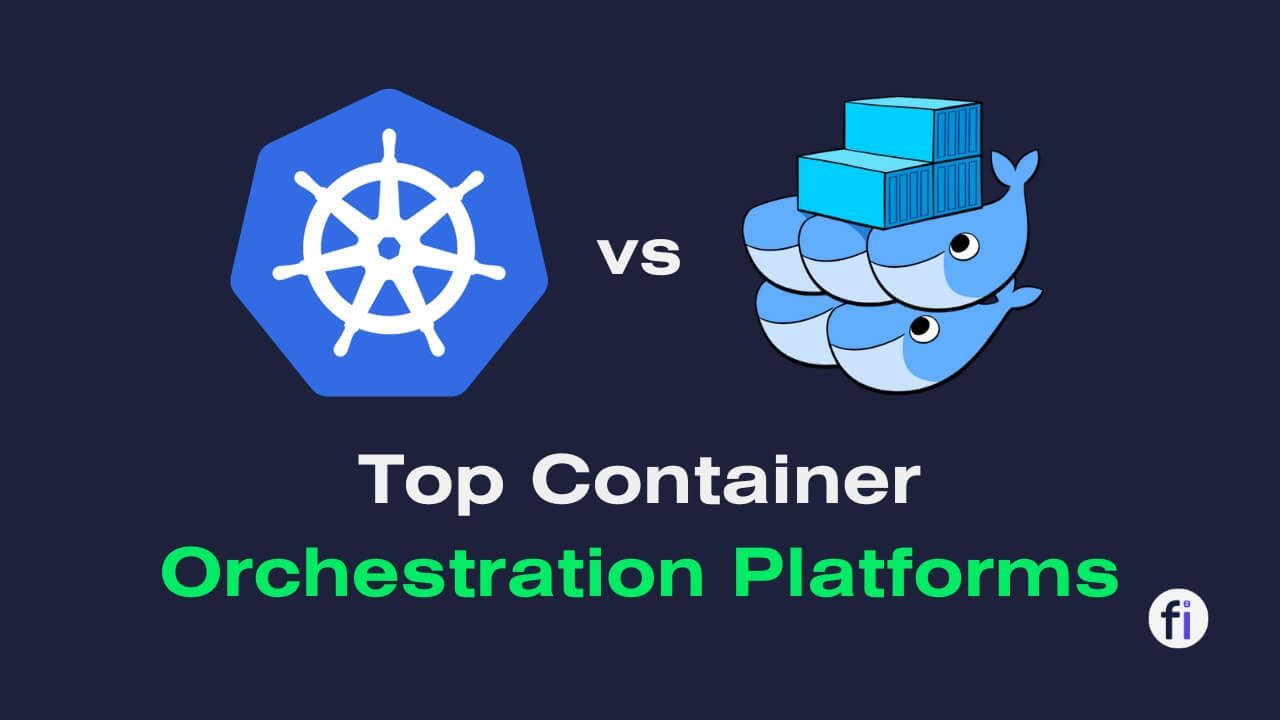
AWS Elastic Container Registry (ECR) and Docker Hub are two popular options for hosting Docker images in the cloud. At a high level, ECR is managed by Amazon as part of their AWS platform while Docker Hub is Docker's own registry service.
What is AWS ECR?
Elastic Container Registry
AWS ECR is a fully-managed container registry service that makes it easy to store, manage, and deploy Docker container images. ECR eliminates the need to operate your own container repositories or worry about scaling the underlying infrastructure.

It is tightly integrated with other AWS services, such as Amazon Elastic Container Service (ECS) and Amazon Elastic Kubernetes Service (EKS), making it a popular choice for AWS users.
ECR has three main phases:
1. Push: You can push your Docker images to ECR using the Docker CLI or any Docker-compatible client.
2. Store: ECR stores your Docker images in a highly available and scalable architecture.
3. Pull: You can pull your Docker images from ECR using the Docker CLI or any Docker-compatible client.
Benefits of using AWS ECR
There are several benefits of using AWS ECR over Docker Hub:
1. Better integration with AWS: Since ECR is an AWS service, it is tightly integrated with other AWS services, such as ECS and EKS. This makes it easier to manage your container images and deploy them to your AWS infrastructure.
2. Higher availability: AWS is responsible for keeping ECR available all the time, ensuring that your container images are always accessible.
3. Better support: As an AWS user, you have access to AWS support, which can help you troubleshoot any issues you may encounter with ECR.

What is Docker Hub?
Docker Hub is the original Docker registry service operated by Docker and it is a cloud-based registry service that allows you to store and share Docker images. Docker Hub provides public and private repositories for Docker images as well as automated build functionality linked to GitHub/GitLab.

Docker Hub also has centralized management and security tools built specifically for Docker repositories. It is a popular choice for developers and organizations that use Docker for containerization.
Docker Hub has three main phases:
1. Push: You can push your Docker images to Docker Hub using the Docker CLI or any Docker-compatible client.
2. Store: Docker Hub stores your Docker images in a highly available and scalable architecture.
3. Pull: You can pull your Docker images from Docker Hub using the Docker CLI or any Docker-compatible client.
Benefits of using Docker Hub
There are several benefits of using Docker Hub over AWS ECR:
1. Ease of use: Docker Hub is easy to use and requires no setup or configuration. You can start using it right away.
2. Public images: Docker Hub is a popular choice for sharing public Docker images. You can find a wide variety of public images on Docker Hub, which can save you time and effort in building your own images.
3. Community support: Docker Hub has a large community of users who contribute to the platform and provide support to each other.

AWS ECR vs Docker Hub
The main differences between ECR and Docker Hub come down to hosting location, repository types, authentication methods, pricing, integration, security, and overall focus.
Hosting and Repositories
1. ECR Hosted on AWS
ECR repositories are hosted within a user's AWS account and region. There are no servers to manage and Amazon handles reliability and availability. ECR repositories exist alongside your other AWS resources.
2. Docker Hub Public or Self-Hosted
Docker Hub is hosted on Docker's own infrastructure. It offers both public repositories for open source images and private repositories. Enterprise customers can also self-host Docker Hub on-premises for private use.
3. ECR Private Repositories
ECR repositories can only be private. They provide secure storage within your AWS account. ECR does not offer any type of public community repositories.
4. Docker Hub Public and Private Repos
Docker Hub supports both public and private repositories. Public repositories are part of the Docker community while private repositories allow for secure storage of internal images.
Authentication and Access
1. ECR Uses IAM Roles
ECR integrates with AWS IAM for access control. You grant access by assigning IAM users or roles the permissions to interact with ECR repositories.
2. Docker Hub Uses Docker ID
Docker Hub uses your Docker ID for managing access to both public and private repositories. You can grant other Docker IDs access to your private repositories.
3. ECR Integrate with Other AWS Services
Since ECR uses AWS IAM, it's easy to connect ECR to other AWS services like ECS, EKS, Batch, Lambda, etc. ECR authorization flows natively into these services.
4. Docker Hub Access Limited to Hub
Docker Hub authentication and permissions are limited to managing Hub itself. You cannot integrate Docker ID's with third-party services like Kubernetes on AWS.
Pricing and Costs
1. ECR Pay Per Usage
ECR charges based on storage used per month and per GB of data transfer. You only pay for what you use with no upfront fees.
2. Docker Hub Free and Paid Tiers
Docker Hub offers both free and paid tiers. Free accounts get one private repo and unlimited public repos. Paid plans provide more private repos and automated builds.
3. ECR Costs Tied to AWS
With ECR your costs will be bundled into your overall AWS bill. No need to manage separate Docker Hub billing.
4. Docker Hub Predictable Pricing
Docker Hub pricing is clear and consistent. Fees are based solely on the resources you use in Hub itself.
Security
1. ECR Encryption at Rest and In Transit
ECR repositories leverage AWS-managed encryption for data at rest and TLS for data in transit between ECR and clients.
2. Docker Hub SSL Encrypt Connection
Docker Hub uses SSL to encrypt connections between clients and Hub during image pushes/pulls. Data at rest is not encrypted by default.
3. ECR Integrate with AWS Security
ECR can utilize advanced AWS security services like VPC endpoints, IAM policies, CloudTrail logging, and more.
4. Docker Hub Security Handled by Docker
Docker Hub manages its own security including SSL, access controls, and repository permissions. Integration with AWS security is not supported.
Integration and CI/CD
1. ECR Native AWS Integration
ECR easily integrates with complementary AWS services like ECS, EKS, CodePipeline, CodeBuild, etc. Great for AWS-centric environments.
2. Docker Hub Integrate with CI/CD Tools
Docker Hub integrates with popular CI/CD platforms like GitHub, GitLab, CircleCI, Travis CI, etc. Flexible for heterogeneous environments.
3. ECR Easy to Use with Other AWS Services
Pushing/pulling ECR images from AWS services is straightforward with baked-in integration. Streamlined AWS workflow.
4. Docker Hub Flexible Integration
Docker Hub integrates with AWS services using standard Docker tooling. More configuration required but support is broader.
Image Management
1. ECR Manage Images through CLI/SDK
ECR itself has no GUI. You use AWS CLI, SDKs, or console to view and manage repository images.
2. Docker Hub Has Image Management UI
Docker Hub provides a web UI and tools to browse repositories, view tags/history, delete images, and more.
3. ECR Focused on Infrastructure
ECR is designed for DevOps and infrastructure management use cases within AWS environments.
4. Docker Hub Focused on Developers
Docker Hub caters to developers building and distributing Docker applications and collaborating on public/private images.

4 Factors to Consider Between AWS ECR vs Docker Hub
1. Integration with AWS:
If you are already using AWS services, such as ECS or EKS, then ECR may be the better choice for you. ECR is tightly integrated with other AWS services, making it easier to manage your container images and deploy them to your AWS infrastructure.
2. Availability:
If you require high availability for your container images, then ECR may be the better choice. AWS is responsible for keeping ECR available all the time, ensuring that your container images are always accessible.
3. Public images:
If you need access to a wide variety of public images, then Docker Hub may be the better choice. Docker Hub is a popular choice for sharing public Docker images, and you can find a wide variety of images on the platform.
4. Ease of use:
If you are looking for a simple and easy-to-use container registry, then Docker Hub may be the better choice. Docker Hub requires no setup or configuration and is easy to use right away.

4 Best Practices for Container Security
Here are some tips to keep in mind
1. Use secure images:
Always use images from trusted sources and ensure that they are free from vulnerabilities.
2. Scan images for vulnerabilities:
Use a vulnerability scanner to scan your images for vulnerabilities before deploying them.
3. Use access control:
Use access control to restrict access to your container images and ensure that only authorized users can access them.
4. Monitor for suspicious activity:
Monitor your container registry for suspicious activity, such as unauthorized access or image tampering.
Conclusion
Both AWS ECR and Docker Hub are popular choices for container registry. The main differences come down to ECR being tightly integrated with AWS environment while Docker Hub is Docker-specific but supports a wider range of use cases.
Main Differences Between AWS ECR vs Docker Hub
- ECR hosted on AWS while Docker Hub is standalone or self-hosted
- ECR uses IAM roles and integrates with other AWS services
- Docker Hub relies on Docker ID and manages its own security
- ECR has native integration with AWS infrastructure
- Docker Hub is focused on enabling developers



FAQs
When to Use ECR?
ECR makes the most sense if you rely heavily on AWS and want deep integration with services like ECS, EKS, Lambda, etc. ECR streamlines container management as part of your cloud infrastructure.
When to Use Docker Hub?
Docker Hub is ideal if you need public repositories, automated builds linked to GitHub, or broad integration with non-AWS environments. Docker Hub gives more flexibility around hosting, security, and developer collaboration
Can I migrate repositories between ECR and Docker Hub?
Yes, you can migrate repositories using docker pull and docker push commands, but permissions and settings will not carry over.
Does Docker Hub integrate with AWS IAM?
No, Docker Hub manages its own users and permissions unrelated to AWS IAM. ECR has much tighter IAM integration.
Can I host hybrid ECR and Docker Hub repositories?
Yes, you can use ECR and Docker Hub side-by-side. Many organizations use ECR for private AWS images and Docker Hub for public images.
Does Docker Hub support VPC endpoints like ECR?
No, Docker Hub does not offer any VPC integration or AWS private networking features. ECR has much deeper AWS network integration.
Can I use the AWS CLI and SDK with Docker Hub?
No, the AWS CLI and SDK only work with ECR. Docker Hub requires using the Docker CLI and standard Docker tooling.
